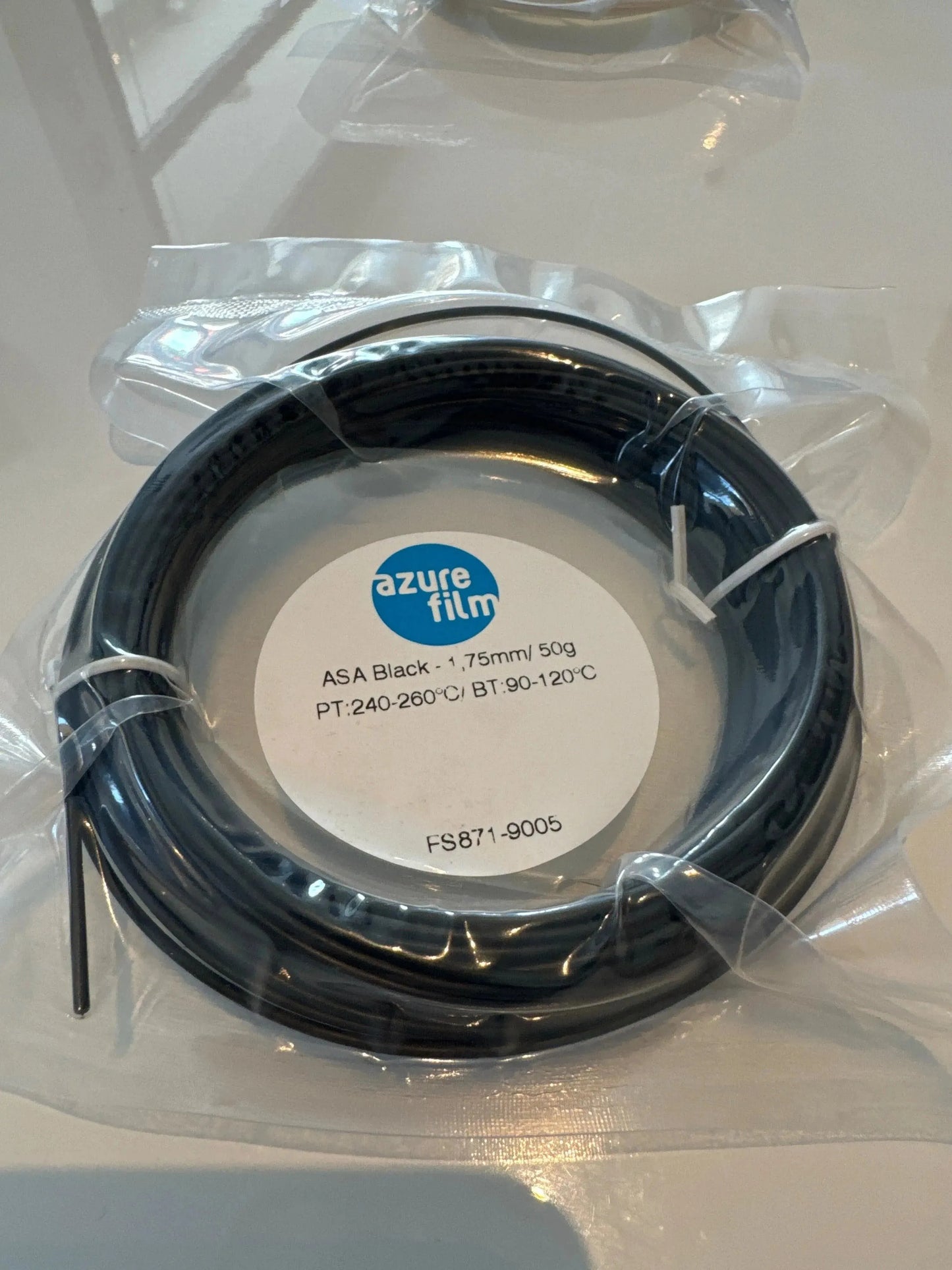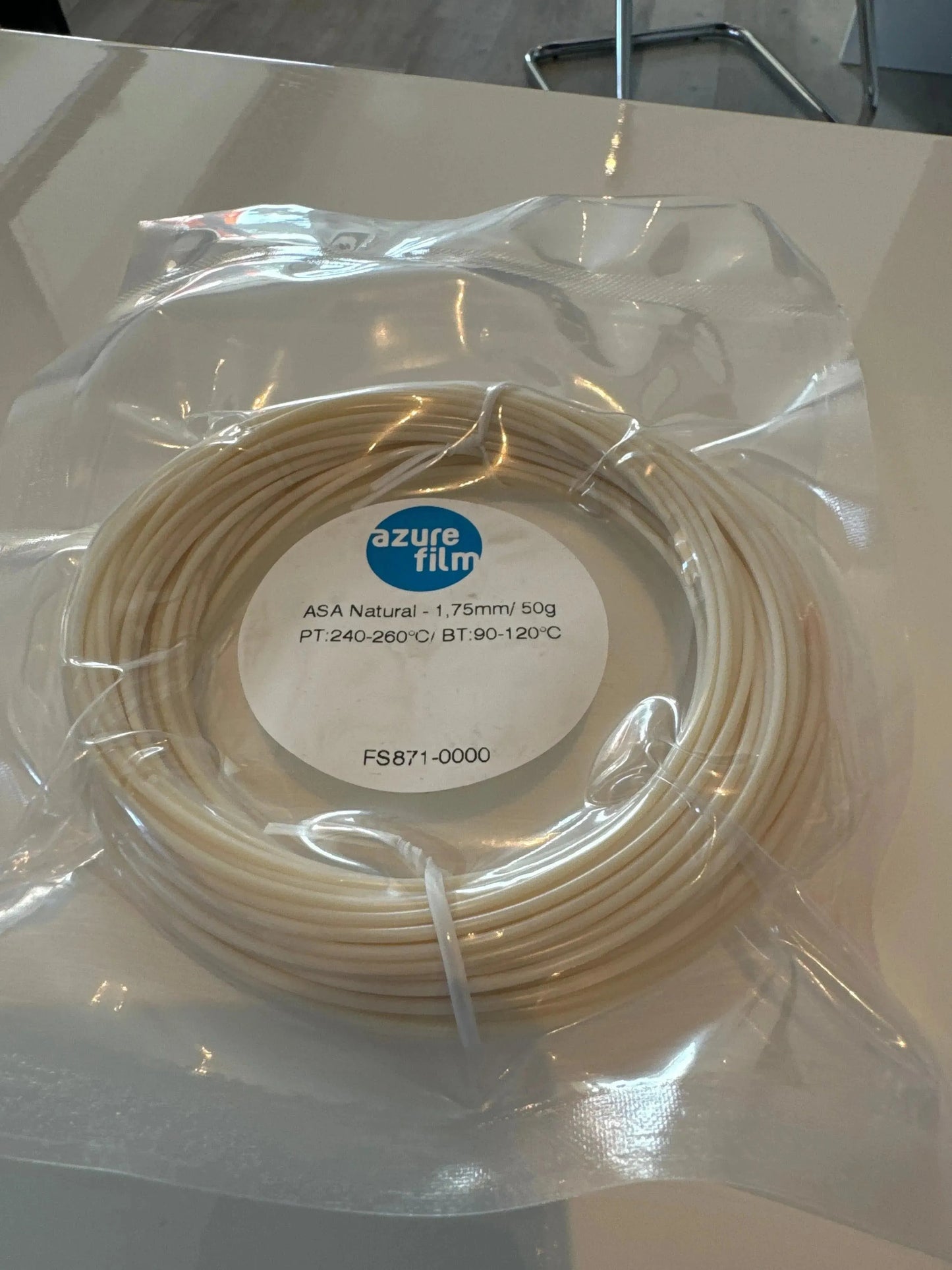FREE SHIPPING FOR COIL ORDERS OVER €70
Test print:
|
3D printer: Flashforge Guider IIS
|
Infill: 20%
|
Nozzle temperature: 250°C
|
|
Slicer: Heal
|
Shells: 2
|
Bed temperature: 110°C
|
|
Nozzle: 0.4mm
|
Layer height: 0.2 mm
|
Print speed: 50 mm/s
|
Recommended settings:
Nozzle temperatures: 240–260°C
Heated bed: Recommended 100–120°C + Enclosure
Print speed:50–100 mm/s
Build platform: Glass bed, Kaptontape, Blue tape.
Acrylonitrile styrene acrylate (ASA) is a thermoplastic that is becoming increasingly popular. ASA filament has many properties that make it ideal for engineering and outdoor applications. ASA 3D filament is the new and improved cousin of ABS filament that we've all heard about. ASA offers many similar advantages to ABS, without having some of its disadvantages.
The most important characteristics are strength, rigidity, extreme resistance to chemical exposure and heat. It was designed especially for professional use. Most of the time it is used for the production of prototypes, which must tolerate higher temperatures and must be resistant to UV radiation. The finished products made with ASA filament are very durable and impact resistant. They can be exposed to sun and heat and generally do not warp or change color. For example, 3D prints made with ABS filament are more delicate when exposed to the sun and tend to deteriorate and yellow if left outdoors. With ASA you don't have these problems: it can remain in the sun for years without deforming or changing color.
Another advantage of using ASA filament over ABS filament is that it deforms less during 3D printing; be careful how you adjust the cooling fan; ASA can crack on the layers if the 3D printing cooling is too high. This filament is a little difficult to 3D print because it is sensitive to heat during 3D printing, but it is possible to print it with a 3D printer that does not have the shroud. However, after printing, ASA parts are very heat resistant and durable, making it a great choice for making birdhouses, custom garden equipment, replacement socket covers, automotive exterior parts, components for homes, sporting goods and other outdoor parts and equipment.
✔️High resistance to UV rays,
✔️water resistant, high chemical resistance,
✔️excellent for functional uses,
✔️possibility of post-processing with acetone,
✔️can be printed with a 3D printer without cover
❌It is sensitive to the formation of cracks during the printing process,
❌it is more expensive than other 3D printing filaments and consumes a lot of energy for printing.
Strength : High | Flexibility : Low | Durability : High
Difficulty of use : Low
Shrinkage /warping: Minimal | Answer : No
Food Safe : Not food safe






